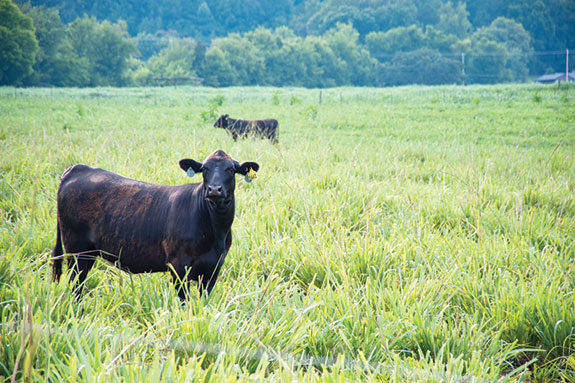One long-term issue that will still need to be faced – even after rain once again starts falling – is how to handle weakened or lost forages.
Before you start to replant any pastures, give some thought to how you might use this opportunity to improve your ability to withstand future droughts.
The first question you may want to ask yourself is: How did my pasture wind up in this condition? It may have been in poor shape going into the drought due to past management, but it also might be that you are asking a cool-season pasture (tall fescue or orchardgrass) to do something for which it is not well-suited.
Cool-season pastures are an essential part of Mid-South forage systems but they will not produce well in hot and especially dry weather.
Over-reliance on cool-season pastures in warm weather can lead to further weakening of stands and perhaps a complete loss of the grass.
If your drought-stricken pasture is on a poor site with thin or coarse-textured soils, cool-season grasses may have been a poor match to the site to begin with and are not a good choice for reseeding.
Instead of simply going back to cool-season grasses, consider using a drought-tolerant grass in any pasture you reseed.
By using drought-tolerant forages, you can reduce the likelihood that you will have to feed hay in future summers and that you will have to re-establish the same pasture again in just a few years.
Here are a few key points to consider as you evaluate reseeding options.
• Think perennials
The best tool for dealing with summer droughts is to establish a perennial summer grass. Perennials do not have the annual expense of reseeding or the risk of establishment failure each year. Perennials are also much cheaper in the long run (30 to 40 percent cheaper per ton of hay produced).
• Consider natives
Native grasses, such as switchgrass, big bluestem and eastern gamagrass, are all warm-season perennials and handle dry weather remarkably well.
These natives are the same species that thrive in the semi-arid Great Plains and make up a large proportion of that region’s forage.
• Make drought-tolerant species a priority
Native grasses, such as big bluestem, have been documented to grow roots to depths of 10 feet or more where bedrock is not limiting.
Switchgrass, another native, produces almost four times the root biomass as tall fescue within the first year after planting.
Over 10 years, studies have shown that switchgrass will produce about five tons per acre of root mass within the first 12 inches of the soil horizon.
Such root systems, common to all of these tall-growing natives, make these the most drought-tolerant forage grasses that grow in the Mid-South.
• Natives produce quality summer forage
Recent research at the University of Tennessee has demonstrated that cattle do well on these grasses during summer months, commonly posting gains of between 1.5 and 2.0 pounds per day on steers.
Bred heifers typically gain between 1.0 and 1.5 pounds daily on these grasses. Blends of big bluestem and indiangrass provide better daily gains but switchgrass and gamagrass can support heavier stocking rates.
• Natives require more management
Native grasses, in part because of their deep root systems, can take a full year before you can begin grazing them, and are not fully mature until the third year.
Once established, they require closer management than short-growing grasses, with maintaining adequate canopy height a key concern.
• Natives last many years
Studies and experience in the region have shown that with proper management, native grasses can last for 15 years and beyond – ample time to pay off the initial investment (especially when reduced inputs that natives require are factored in).
• How much forage is enough?
Studies have indicated that about 30 percent warm-season forages may be an appropriate level – perhaps more farther south and less farther north.
Consider that three to four of the nine to 10 grazing months we have in the Mid-South occur during the hot part of the year. Given the efficiency of natives, virtually all dedicated hay ground could be in these grasses. Regardless of the proper ratio, start small and evaluate your need for more summer grasses as you go. FG
For more information on establishing and managing native grasses, click here or contact your county extension office.
PHOTO
Drought and native grasses. Photo courtesy of Patrick Keyser.












